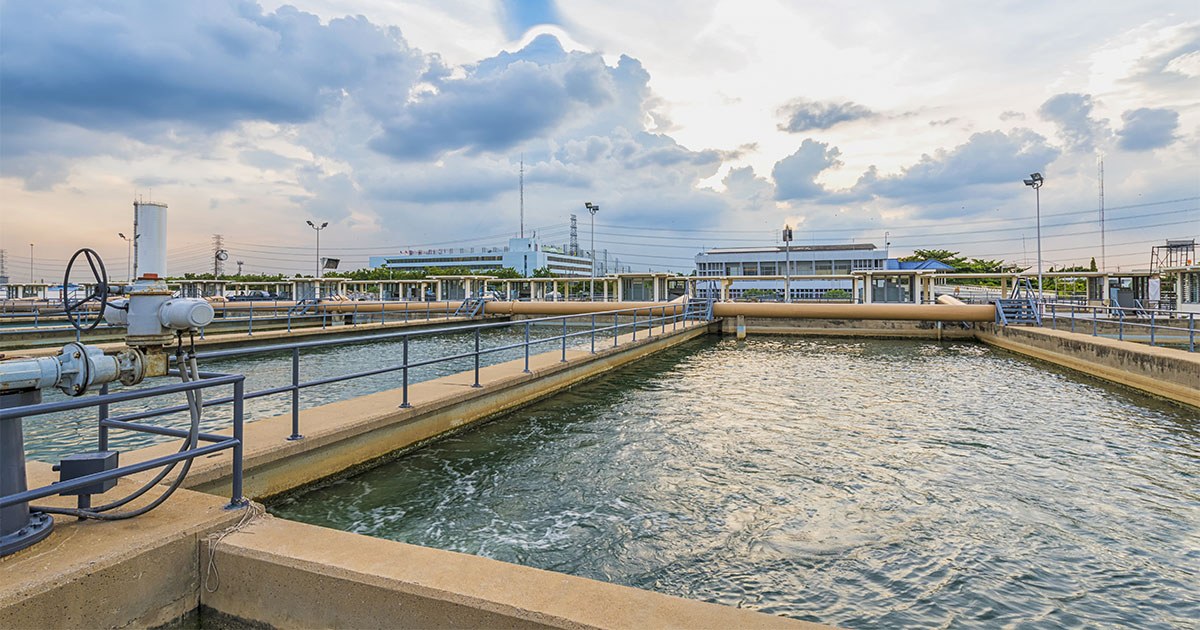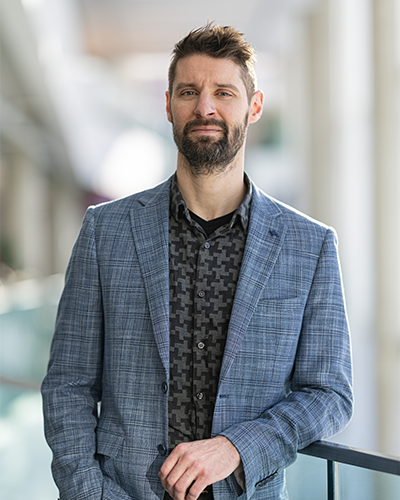
New contaminants regularly appear on scientists’ radar. They are not necessarily “new” to the environment, but newly detected or recently recognized as problematic. These emerging contaminants were simply not taken into account when our water treatment plants were designed.
Mathieu Lapointe, professor at ÉTS, holder of the Canada Research Chair in Water and Environmental Protection, and Director of the ÉTS Water Engineering Laboratory (LGEPE), is presently tackling this challenge. His work seeks to adapt our drinking water and wastewater infrastructure, to better intercept these pollutants and address new environmental realities.
Intercepting Emerging Contaminants
Drinking water and wastewater treatment plants in Quebec, Canada, and around the world rely on processes developed decades ago. However, today’s systems are unable to treat specific substances, such as nanoplastics, perfluorinated compounds (PFAS), pharmaceutical compounds, and certain pesticides.
PFAS are of particular concern. Found in everyday products such as glues, coatings, paints, textiles, carpets, packaging, and pharmaceuticals, they are highly stable and therefore virtually indestructible in nature. Even if their use is now restricted, they persist in soil, rivers, and groundwater, particularly through leachate from landfills containing old manufactured products.
Eliminating these contaminants using advanced processes would cost Quebec billions of dollars. Mathieu Lapointe and his team are taking a more realistic approach: improving existing processes rather than replacing them.
His team has patented at ÉTS a new filter medium that improves granular filtration, a process based on passing water through a porous medium (usually sand). By modifying the surface chemistry of the sand through chemical grafting, they have created a material capable of capturing up to 30% more PFAS than conventional sand.
This approach allows existing infrastructure to be used: only the filter medium needs to be replaced, not the entire system. The solution is effective, economical, and quick to deploy.
Taking this further, the researcher is collaborating with chemists to explore new grafts and design materials capable of targeting other families of contaminants.
Filters for Agricultural Water

The second part of the research concerns agricultural drainage water, an often underestimated source of pollution. This water, which runs off from fields into waterways, contains high concentrations of phosphorus, nitrogen and pesticides, but currently undergoes no treatment.
The team is therefore developing filters adapted to this reality. Here, chemical grafting of sand is adjusted to capture these nutrients and pollutants. Iron, which has a strong affinity with phosphorus, is incorporated into the sand.
These filters could take the form of functionalized riparian strips made of grafted sand installed along field borders. These are passive, simple, and inexpensive processes that do not require energy and significantly reduce diffuse agricultural pollution. As Mathieu Lapointe points out: “We won’t remove everything but, right now, we’re not removing anything.”
Expanding Plants… From Within
In Quebec and Canada, several wastewater treatment plants have reached their maximum capacity. As a result, wastewater overflows are becoming more frequent, especially during heavy rains. Montreal, with its combined sewer system, is a typical example.
Rather than building new facilities—which is often impossible due to lack of space or budget—the researcher proposes increasing the treatment capacity of existing plants using another innovation patented at ÉTS: superflocculants. This work is being conducted in conjunction with the AdapT Institute.
These additives, integrated into coagulation-flocculation processes, form larger and denser flocs (small aggregated particles) that settle more quickly. This reduces the retention time required in the basins, and allows treatment of greater volumes of water without expanding the infrastructure.
Adapting by Innovating
Contaminants do not disappear on their own, and our infrastructure, some of which was designed decades ago, is reaching its limits. Mathieu Lapointe’s research shows that it is possible to adapt our existing systems by focusing on innovation, materials chemistry, and process intelligence.
The city of Montreal is taking a proactive approach by testing some of these solutions to reduce persistent contaminants.
By combining applied science, creativity and pragmatism, the Canada Research Chair in Water and Environmental Protection is helping our infrastructure evolve at the same pace as environmental challenges.



